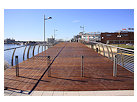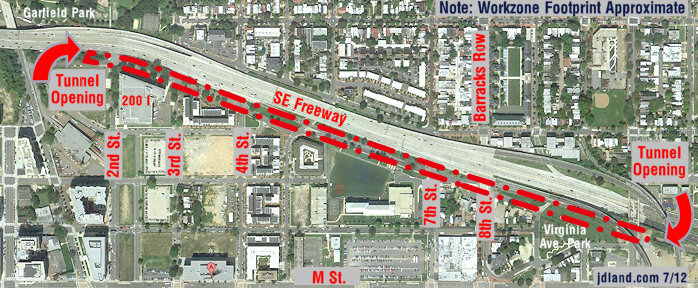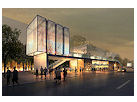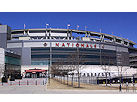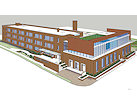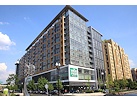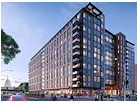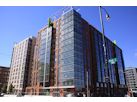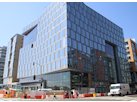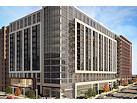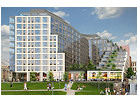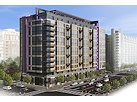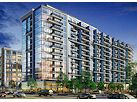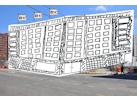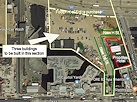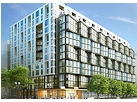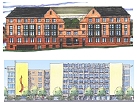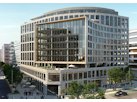|
| ||||||||||||||||||||
Please note that JDLand is no longer being updated.
peek >>
Near Southeast DC Past News Items
- Full Neighborhood Development MapThere's a lot more than just the projects listed here. See the complete map of completed, underway, and proposed projects all across the neighborhood.
- What's New This YearA quick look at what's arrived or been announced since the end of the 2018 baseball season.
- Food Options, Now and Coming SoonThere's now plenty of food options in the neighborhood. Click to see what's here, and what's coming.
- Anacostia RiverwalkA bridge between Teague and Yards Parks is part of the planned 20-mile Anacostia Riverwalk multi-use trail along the east and west banks of the Anacostia River.
- Virginia Ave. Tunnel ExpansionConstruction underway in 2015 to expand the 106-year-old tunnel to allow for a second track and double-height cars. Expected completion 2018.
- Rail and Bus Times
Get real time data for the Navy Yard subway, Circulator, Bikeshare, and bus lines, plus additional transit information. - Rail and Bus Times
Get real time data for the Navy Yard subway, Circulator, Bikeshare, and bus lines, plus additional transit information. - Canal ParkThree-block park on the site of the old Washington Canal. Construction begun in spring 2011, opened Nov. 16, 2012.
- Nationals Park21-acre site, 41,000-seat ballpark, construction begun May 2006, Opening Day March 30, 2008.
- Washington Navy YardHeadquarters of the Naval District Washington, established in 1799.
- Yards Park5.5-acre park on the banks of the Anacostia. First phase completed September 2010.
- Van Ness Elementary SchoolDC Public School, closed in 2006, but reopening in stages beginning in 2015.
- Agora/Whole Foods336-unit apartment building at 800 New Jersey Ave., SE. Construction begun June 2014, move-ins underway early 2018. Whole Foods expected to open in late 2018.
- New Douglass BridgeConstruction underway in early 2018 on the replacement for the current South Capitol Street Bridge. Completion expected in 2021.
- 1221 Van290-unit residential building with 26,000 sf retail. Underway late 2015, completed early 2018.
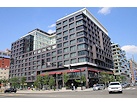
- NAB HQ/AvidianNew headquarters for National Association of Broadcasters, along with a 163-unit condo building. Construction underway early 2017.
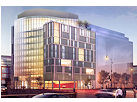
- Yards/Parcel O Residential ProjectsThe Bower, a 138-unit condo building by PN Hoffman, and The Guild, a 190-unit rental building by Forest City on the southeast corner of 4th and Tingey. Underway fall 2016, delivery 2018.
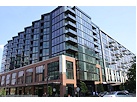
- New DC Water HQA wrap-around six-story addition to the existing O Street Pumping Station. Construction underway in 2016, with completion in 2018.
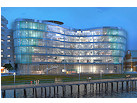
- The Harlow/Square 769N AptsMixed-income rental building with 176 units, including 36 public housing units. Underway early 2017, delivery 2019.
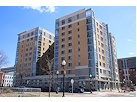
- West Half Residential420-unit project with 65,000 sf retail. Construction underway spring 2017.
- Novel South Capitol/2 I St.530ish-unit apartment building in two phases, on old McDonald's site. Construction underway early 2017, completed summer 2019.
- 1250 Half/Envy310 rental units at 1250, 123 condos at Envy, 60,000 square feet of retail. Underway spring 2017.
- Parc Riverside Phase II314ish-unit residential building at 1010 Half St., SE, by Toll Bros. Construction underway summer 2017.
- 99 M StreetA 224,000-square-foot office building by Skanska for the corner of 1st and M. Underway fall 2015, substantially complete summer 2018. Circa and an unnamed sibling restaurant announced tenants.
- The Garrett375-unit rental building at 2nd and I with 13,000 sq ft retail. Construction underway late fall 2017.
- Yards/The Estate Apts. and Thompson Hotel270-unit rental building and 227-room Thompson Hotel, with 20,000 sq ft retail total. Construction underway fall 2017.
- Meridian on First275-unit residential building, by Paradigm. Construction underway early 2018.
- The Maren/71 Potomac264-unit residential building with 12,500 sq ft retail, underway spring 2018. Phase 2 of RiverFront on the Anacostia development.
- DC Crossing/Square 696Block bought in 2016 by Tishman Speyer, with plans for 800 apartment units and 44,000 square feet of retail in two phases. Digging underway April 2018.
- One Hill South Phase 2300ish-unit unnamed sibling building at South Capitol and I. Work underway summer 2018.
- New DDOT HQ/250 MNew headquarters for the District Department of Transportation. Underway early 2019.
- 37 L Street Condos11-story, 74-unit condo building west of Half St. Underway early 2019.
- CSX East Residential/Hotel225ish-unit AC Marriott and two residential buildings planned. Digging underway late summer 2019.
- 1000 South Capitol Residential224-unit apartment building by Lerner. Underway fall 2019.
- Capper Seniors 2.0Reconstruction of the 160-unit building for low-income seniors that was destroyed by fire in 2018.
- Chemonics HQNew 285,000-sq-ft office building with 14,000 sq ft of retail. Expected delivery 2021.
1391 Blog Posts Since 2003
Go to Page: 1 | ... 33 | 34 | 35 | 36 | 37 | 38 | 39 | 40 | 41 ... 140
Search JDLand Blog Posts by Date or Category
Go to Page: 1 | ... 33 | 34 | 35 | 36 | 37 | 38 | 39 | 40 | 41 ... 140
Search JDLand Blog Posts by Date or Category
WTOP put together a short profile yesterday of the Gelberg Sign Company, the small local company that won the contract a few months back to create all the signage for Nationals Park: "The signs include everything from huge metal letters that will spell out 'Nationals Park' in front of the ballpark, to signs leading to seats, concession stands and rest rooms. [...] With opening day just about 100 days away, crews this week began the process of installing signs, mounting clips and installing hardware."
|
More posts:
Nationals Park
|
In case you're wanting to schedule your 2008 around when the Nats are (or aren't) going to be in the neighborhood, here's the just-released 2008 schedule, posted over at Barry's place. I'm slowly adding the home games to my calendar so that locals can have an easy spot to check on home games. And of course this schedule shows that the March 30 Sunday night opener on ESPN against Atlanta reported last week is now confirmed; ESPN has a quick blurb on the opener. (UPDATED to fix ESPN link, and to pass along that MLB.com says that President Bush has been invited to throw out the first pitch. Start lining up now in order to get through the metal detectors before the fifth inning.)
|
Comments (0)
More posts:
Nationals Park
|
While the plan that Tommy Wells announced last week to address on-street parking around the ballpark and on Capitol Hill is just beginning its trek through the legislative process, the first of the new parking lots that the city and the Nationals will want stadium-goers to use will get underway soon. Building permits have been approved in the last few weeks for temporary surface lots in the Capper footprint at Second and K, Second and L, and Sixth and M, and work on the first two should be starting this month. (The third lot will get started in January, after the wreckage from the almost-completed demolition of the old Capper Seniors building is cleared away.)
At the same time, a Request for Proposals has been issued by DC Housing Enterprises for the management of these lots, offering a one-year contract with up to four one-year renewal options. The RFP, while chock full of selection criteria, required certifications and other specifications, also gives a few details about the planned operations of the lots themselves, which together will have about 670 spaces (or more, if valet parking is used). They will be offering monthly prepaid public parking on weekdays from 6 am to 7 pm, at a rate of not less than $150 per month; some daily parking may be allowed as well.
But users of the lots will have to vacate prior to any Nationals game, since the lots are "expected to be subject to an exclusive arrangement" with the team that gives all spaces over to ballgame parking from two hours before the game until three hours after. And a nice arrangement it is--the DC Housing Authority will apparently receive $10 per parking space per game, whether all spaces are used or not.
The zoning rule passed earlier this year that allowed the creation of temporary ballpark-area lots such as these says that they may also be used for a "seasonal or occasional market for produce, arts or crafts with non-permanent structures," though no plans for anything like that have been announced. The rule also states that the lots can only last until April 2013, since it is believed development around the ballpark will bring plenty of underground parking that will negate the need for these surface lots. The three Capper lots will eventually be replaced with a mix of apartment buildings, townhouses, and office buildings, though start dates for those projects have not been announced.
One block south of Capper, at the Yards, another batch of temporary surface lots are planned, which would have about 700 spaces. Beyond these and the garages with 1,225 spaces on the ballpark site itself, no other stadium parking locations have been publicly identified, though the Nationals have said they have found enough parking spaces for all season ticket holders--they just haven't said where they all are yet. And the city and the team continue to say that Metro will be the best way to get to the ballpark.
You can check out my stadium parking map to see where these new lots are--it also shows the other locations where zoning allows temporary lots, plus existing lots and underground garages where parking could be made available.


Before the snow-that-never-was arrived yesterday, I took a quick spin to get some updated photos. There was still a smidgen of sun when I visited the old Capper Seniors site, where only the southwest wing of the huge building remained standing when I was there (but even that could be gone by now). I also wandered along Tingey Street behind the DOT HQ for the first time in a long time to see what's going on with the work at The Yards--they're now preparing to build some temporary parking lots and are doing their infrastructure work before starting the rehabs next year of three existing buildings into residential and retail offerings. I also took some shots along M Street and at Onyx on First and 100 M to take advantage of the overcast skies in those spots, since the building shadows on winter days when the sun's out are almost impossible to work with. Finally, I got updated photos of 55 M Street, the northern portion of Monument's Half Street project, where the section along M Street is now three stories high and a fourth story is underway on the southern edge of the building.
Here's the entire batch of new photos on one page--don't forget to click the  if you want to see all photos in the archive from a certain angle. And in case you missed these a few days back, I recently took new overhead photos of the North of M area (looking south and west and northwest), showing quite a change in the last 21 months.
if you want to see all photos in the archive from a certain angle. And in case you missed these a few days back, I recently took new overhead photos of the North of M area (looking south and west and northwest), showing quite a change in the last 21 months.
 if you want to see all photos in the archive from a certain angle. And in case you missed these a few days back, I recently took new overhead photos of the North of M area (looking south and west and northwest), showing quite a change in the last 21 months.
if you want to see all photos in the archive from a certain angle. And in case you missed these a few days back, I recently took new overhead photos of the North of M area (looking south and west and northwest), showing quite a change in the last 21 months.
There has been much discussion by residents and city officials over the impending "apocalypse" of traffic and parking congestion with the opening in April of the new ballpark. Residents not only in Near Southeast (all 400 of you) but in Southwest and on Capitol Hill have been waiting for the city to announce exactly how on-street parking will be handled during games, as there is great concern as to whether residents will still be able to park on their streets and won't have to deal with hundreds or thousands of cars circling the neighborhoods looking for free parking.
It's been thought that the model used at RFK--special parking permit stickers for residents to put on their cars--would be ported over to the new ballpark area, but over the past few months council member Tommy Wells and his staff, along with DDOT, have been working on a pilot plan they hope could address not only the parking issues at the ballpark but also the parking problems seen on Capitol Hill along Pennsylvania Avenue, Barracks Row (Eighth Street), and the streets around Eastern Market. They are looking for ways to balance the needs of residents with the impact on businesses if parking is hard to come by, and are looking at a concept called "Performance Parking." Here's my five-cent summary:
"Retail" streets would have the hours of metered parking extended to seven days a week until late in the evening, and with the prices to park at the meters raised to a level that would discourage some people from arriving by car, opening up more spaces and reducing double-parking and congestion. The adjacent residential streets, now covered by Zone 6 parking rules that ostensibly only allow two hours of visitor parking during weekdays (but are dependent on the parking enforcement folks tracking the cars to know how long they've been there) would see the installation of meter kioskson one side of the street, where nonresidents could park for no more than two hours even until late in the evening and on weekends. (Residents could park on both sides of the street as long as they want.)
These rules would extend with slight tweaks to the streets around the ballpark: "Retail" streets in these areas would allow longer stretches of parking (four-plus hours), but would have rates for metered parking comparable to the amount charged in pay lots, to discourage ballpark-goers from believing that on-street parking would be any cheaper than what's available in existing lots and garages. And with the residential streets having meters that wouldn't allow parking for longer than two hours, most people going to three-hour-plus baseball games would avoid parking on those blocks.
In other words, these restrictions would tell visitors--park in a lot, or take Metro, or walk, or ride your bike, but don't expect to drive down and find a space for free on a street somewhere.
One other facet of this plan would be to use the revenue from these much higher on-street parking rates to pay the cost of the new kiosk-type meters (that cost about $7,800 a pop), the cost of the extra enforcement needed to make the plan work, and also improvements to the streets and the communities to make alternative modes of transportation more enticing (fixing sidewalks, adding bike racks, making bus shelters better, etc.).
This plan has been previewed for local businesses and the ANCs (today it was the media's turn), and it's hoped that a bill creating this special pilot project can start its path through the city council process in early January. Alas, this would not be enough lead time to get it all in place before Opening Day, so there will probably be some tumult during the early part of the season as the city tries to keep stadium visitors from taking over the residential neighborhoods.
You'll no doubt be reading much more about this idea over the coming months, and there will be public meetings and refinements and many words written about it all, I'm sure. And of course one other piece of the puzzle--the locations of the various lots where the Nationals will be directing season-ticket holders to park--has yet to be made public. Eventually Wells's office will release maps (perhaps soon) showing the streets that could be designated as retail or residential, along with other documents providing far more detail than what I've previewed here.
In the meantime, I'm going to do something I've never done in the nearly five years that I've been running this Near Southeast site--I'm going to open up the floor to comments about this idea, that then hopefully can be read by city officials and other residents to see what people's impressions are of the plans. But be forewarned, if this little low-tech experiment goes off the rails and people start getting out of control, I'll close it down and won't be inclined to give it another shot. So behave. Of course, you'll be commenting on something you probably need to learn much more about to truly be informed, but when does that ever stop anyone on the internet?
UPDATE: Here's a story from the Post on Wells's parking plan. " 'The ballpark visitors are going to be very tempted to look for cheap parking' on city streets, said Neha Bhatt, a planner in Wells's office. 'We've got to get that out of people's head that free parking exists here.' " The story also reminds me to mention that plans are to make Buzzards Point off-limits to on-street parking during ballgames (though it's likely some cash lots will be built there).
Also, there's going to be an Committee on Economic Development oversight roundtable on "Parking and Traffic Plan for the Nationals' Stadium" on Jan. 11 at 10 am. (It was originally scheduled for this Monday, the 17th, but they felt like there hadn't been enough public notice. I'll say--I hadn't even heard about it!)
UPDATE II: The WashTimes piece on the plan.
|
Comments (0)
|
The Atlanta Journal-Constitution is reporting that the long-rumored debut of Nationals Park on the special March 30 ESPN Sunday night season opening broadcast has gotten its last batch of approvals (from the players association) and is now a "go." (No official confirmation yet.)
UPDATE: The Post is reporting that this is a done deal as well, though still without confirmation from MLB.
|
More posts:
Nationals Park
|
So, I'm scanning this late-Friday-afternoon press release from the Mayor's office about a new location for the MPD evidence warehouse (a location so secure they won't actually say where it's going to be). The warehouse was one of the functions that was supposed to go into 225 Virginia Ave., and reading this took me back to some of those public events earlier this year where Office of Property Management director Lars Etzkorn tangled with council members when first defending the plan to move MPD there and then when defending the decision not to move MPD there (the exchanges described here are my favorites).
So imagine my surprise when reading the end of the warehouse press release: "At the same property news conference, the Mayor introduced Robin-Eve Jasper as the new interim director of the city's Office of Property Management. The former director, Lars Etzkorn will be nominated to a full-time position on the Contract Appeals Board." Perhaps his absence from the October hearing on MPD space needs and November's announcement of the city's plan to get rid of the 225 Virginia lease spoke more than I realized at the time. He did testify just yesterday in front of the city council, with no mention in his remarks that he'd be leaving his post.
|
More posts:
|
I've received two new renderings of RiverFront on the Anacostia, the 5.8-acre mixed-use development planned for the Florida Rock site that sits on the Anacostia River just south of the ballpark. There's a view from the river showing the four buildings that make up the project (two office buildings, one residential, and one hotel), and a detailed view from Potomac Avenue and First Street showing the eastern office building (which would be the first building under construction) and the others along Potomac Avenue that would face the ballpark. The developers will be having a hearing in front of the Zoning Commission sometime within the next few months to get this latest iteration of the design approved; once that process is complete, construction could begin. The entire project will take a number of years to complete. As for the question most often asked--when will the concrete business still operating on the site be shut down?--my learned answer is: I don't know.
Take a look at my RiverFront page for much more detail on the current design for the site, which also includes a public plaza at the eastern end of the site that will abut Diamond Teague Park (and that helps to give unobstructed views of the river from the ballpark's grand staircase). The planned Anacostia Riverwalk runs all along the site's south side, with a promenade area no less than 75 feet wide (and with separate bike and pedestrian paths). There's also "Potomac Quay", a glass-enclosed retail walk running between the eastern office building and the residential building and a huge water feature at the "Piazza Cascade", tieing together the three western buildings of the project. And, for a look at some of the long and winding road that this project has traversed over the years, scan the news items I've posted.
|
More posts:
Florida Rock, zoning
|
While the main stories in the media coming out of today's WMATA board meetings will no doubt be the approval of fare increases, my focus was on other action items:
* Without discussion, the board voted to execute the sale announced back in June of the 5,612-sq-ft WMATA land at New Jersey and M to "NJA Associates" (aka Donohoe). For more detail, you can read my entry from last week about how this land fits in with Donohoe's plans for 1111 New Jersey Avenue.
* The board also approved the plan to build a new 114-bus garage at DC Village to replace the Southeastern Bus Garage at Half and M, contingent on not only a series of land transfers between the city and WMATA but also on the $69.25 million sale of the current bus garage site to Akridge, since the proceeds from that sale are necessary to both fund the new garage and the interim costs associated with continuing the old garage's functions until the new site is ready. Marion Barry spoke forcefully in support of the move, speaking not only of his constituents' strong support for building a new facility in Ward 8 but also that the current garage is "in the way of progress," situated as it is smack in the middle of the fledgling Ballpark District.
No timeframe for closing the current garage was discussed by the WMATA board, and it was only mentioned in passing that Monument Realty's litigation surrounding the sale of the old garage is still pending. WMATA employees who I've talked to at Half and M in recent days have said they were initially told the garage would be vacated this month, then were told it would be next month, and are now being told that there's no firm date planned.
If indeed WMATA is not planning to close the garage before Opening Day, it will need to come up with plans for moving their buses in and out of that space while dodging tens of thousands of pedestrians, or how they'll shut down the garage during game times. It would also mean that the garage's possible use as a temporary parking facility would be off the boards.
Here's your dreary Thursday morning reading material:
* The Post writes about the labor disputes at the ballpark: "Labor leaders are defending the hiring practices at the construction site of the new Washington Nationals ballpark, saying that efforts to give jobs to D.C. residents have been an 'unequivocal success.' [...] [T]he leader of the Metropolitan Washington Council of the AFL-CIO said the project has been successful in hiring District workers. The letter disputed criticism from some local activists that the ballpark had not come through with jobs for city residents."
* The Examiner, NBC4, WBJ, and the Post write about the presentations last night of the four finalists' plans for redeveloping Poplar Point. Channel 4 also includes a slideshow of the designs and links to information on each plan's community benefits. Apparently one of the propsals includes "an aerial tram that would carry passengers across the river to the new baseball stadium." And Now, Anacostia has some bullet points on the various presentations as well.
* Also from the Post, a District Extra piece on last week's council hearing on the Taxation Without Representation tote boards that some city council members want to put on the Wilson Building and the stadium. (Here's my report on the hearing.)
* My Ballpark and Beyond column in the Post adapts my recent blog posts on the sale of St. Matthew's, the Capper PILOT bill, and the recent Capitol Riverfront BID meeting.
* UPDATE: I should also add this opinion piece in the Examiner by Phil Wood on his impressions of the new ballpark. "If you asked me to describe the place in a single word, I'm ready to answer. Compelling."
|
|
Time again to dig into the What's the Deal With....? mailbag. Reader BH has asked about the two boarded-up gas stations and the old KFC along South Capitol Street, wondering when they're going to be demolished.
I have no answer, alas, for the former Exxon station on the east side of the street at I, which has been closed since May 2006 after its owner pleaded guilty to double-billing government contractors for more than $120,000; JPI was apparently somewhat interested in acquiring it so that they could build 23 I on the entire block, but that doesn't seem to have happened.
The KFC/Taco Bell closed in June after being bought by Ruben Companies, which has long-term plans for an office building on the site, to match their SC1100 on the east side of the street and 21 L Street to the north. However, they are not planning to demolish the KFC anytime soon, and in fact are looking to rent the space to a food-related business in the near-to-medium term.
The second Exxon, on the west side of the street south of K, closed at the end of August. The rumor was that the lot was going to be sold, but so far no transactions have shown up in the DC property sales database. (Ruben owns the other two-thirds of that block, which is the 21 L Street site.)
(I went 1 for 3 on this. Yeeech. This is what I get for not anticipating that WTDW.... questions wouldn't necessarily be ones I know the answers to! But I'm willing to keep trying--if you have a WTDW.... question, pass it along. Be advised, though, that I'm posting these as I can get to them, so submissions may not get addressed right away.)
|
More posts:
1100 South Capitol, One Hill South, One Hill South, What's the Deal?, exxon697n, jpi, Retail, South Capitol St., Square 697n
|
Two bills of Near Southeast interest passed their first readings at today's city council meeting, on the consent agenda, no less. (Consent agenda = no discussion or bickering! Yay!) First was Bill 17-0448, which authorizes the closing of the public alley on Square 696 (bounded by Half, First, I, and K), and which had been interesting mainly for the affordable housing trust fund contribution discrepancy that came up during the bill's hearing a few weeks ago, when the developers noted that they expected their contribution to be in the neighborhood of $900,000 and the Office of Planning determined the required sum be closer to $8 million. Apparently the final bill calls for a $1.1 million contribution, which council chairman Vincent Gray said is the largest trust fund contribution ever as the result of an alley closing. The developers also have agreed to create a 20-foot-wide pedestrian right-of-way through the middle of the block to allow for easy access from I Street to the planned public plaza on K Street, though apparently DDOT requested that this right-of-way be upgradable for "motorized access" in the future if necessary. This alley closing will allow DRI Development to move forward with their plans for 800,000 square feet of office space in three buildings with 37,000 square feet of ground-floor retail. There've been noises that the first construction on the site could begin in the summer of 2008, but nothing official has been announced. (The last tenants on the block, in the cab garage at First and K, are expected to move out in February when their lease expires.)
Also passed today was Bill 17-0292, the Capper PILOT funding bill that I just wrote about in detail a couple days ago. This authorizes a bond issuance of up to $55 million that will yield close to $37 million to pay for infrastructure improvements at Capper/Carrollsburg. The bonds will then be repaid by landowners making payments in lieu of property taxes. I should mention that these PILOT funds won't only be repaid by residents of Capitol Quarter--there are two planned office developments totaling 750,000 square feet that are within the Capper PILOT area (600 M Street at the old Capper Seniors site and 250 M Street) that will generate PILOT payments.
Each bill will come before the council again in January for their final votes.
It's nowhere near as exciting as a liquor license at the ballpark, but I should still pass along that the ANC voted 4-0-3 to support Forest City Washington's request for map and text amendments at The Yards that is going in front of the Zoning Commission on Jan. 11. (The three abstentions were because those commissioners had not received the packet of explanatory materials before the meeting.) The amendments are all pretty technical (larger setback along the Yards's boundary with the Navy Yard, clarifications about ground-floor retail requirements, etc.). You can see the amendments spelled out in the Zoning Commission hearing announcement.
I just got back from ANC 6D's monthly meeting, where the commissioners voted 6-0 (with one abstention) to support the application by Volume Services Inc. for a "CX Arena" liquor license at the new ballpark. This single license would cover all concessions at the stadium, including kiosks, restaurants and boxes, and at individual seats.
The ANC had asked representatives of the Nationals and concessionaire CenterPlate to discuss potential issues with alcohol sales at the ballpark in greater detail, but it became a more freewheeling discussion between the team officials, who are trying to assure nearby residents that the team wants to be a good neighbor, and the commissioners, who feel that the community has received very little communication up to now from the DC Sports and Entertainment Commission and other city agencies about traffic, parking, and other stadium-related issues.
Nationals senior vice president for business affairs Michael Shapiro spoke a number of times of the Nationals' "sincere desire to become a member of the community," and that they want the neighbors "to be proud" of the new ballpark. Shapiro and director of ballpark operations Matthew Blush offered to meet on a regular basis with community leaders, which appeared to be well received by the commission's vice chair Andy Litsky, who described the ANC's dealings with the Sports and Entertainment Commission on ballpark-related issues over the past two years as a "horror show."
Greg McCarthy, who is senior director of the Nationals' ballpark district dealings, spoke about parking and traffic issues, explaining that season ticket holders will be assigned to specific lots and will be given detailed instructions on the correct routes to use, to prevent the cut-through traffic and circling for on-street parking that the team says it will be actively discouraging. The commissioners made clear that parking issues remain a huge concern for residents, and that they want to hear specifics soon about how gameday parking will be handled.
Shapiro and Blush described upcoming outreach efforts such as bringing neighborhood kids to the ballpark for batting practice, getting jobs at the stadium for local residents, and having ambassadors and security outside the ballpark itself before and after games as part of making "the building work for the community." Commissioners and audience members were particularly interested in job opportunities at the ballpark, with the hope that the Nationals will go beyond "hanging out a sign" to actively recruit nearby residents.
As for the liquor license, Shapiro indicated that most of the rules in place at RFK (such as no alcohol sales after the seventh inning) would be in place at the new ballpark, and suggested that the Verizon Center would be used as a guide for how to handle alcohol-related issues for non-baseball events such as concerts. (I'm guessing that liquor sales might not be an issue at the first non-baseball event at the new stadium, which is scheduled to be the April 17 mass by Pope Benedict XVI.)
With some concerns that protesting or otherwise hindering this application might spur the sports commission or the city council to issue a liquor license outside of the city's Alcohol Beverage Control jurisdiction, the ANC gave its support. The license hearing is scheduled for Jan. 2.
In the meantime, the DCSEC, the Nationals, and community leaders have another meeting scheduled for Dec. 19.
|
|
I visited my perch above New Jersey Avenue today and got updated photos looking to the south and west and northwest, which provide quite the overview of the changes in the past 21 months on the blocks I've wittily dubbed North of M (between M, South Capitol, the freeway, and New Jersey). The two links above show you just the oldest and the newest photos for each angle, or you can try these links to see all the photos I've taken of those angles, at about three-month intervals.
Of course, the arrivals of 100 M, Onyx, and 70/100 I are the biggest changes; you can also see that Velocity is building the garage levels and will be above ground by late winter, and that 909 New Jersey's crane is now in place, meaning that vertical construction there is not far off. But thanks to the 100 M/Onyx construction, peeks at the ballpark and Monument Half Street from this vantage point are now pretty well gone.
I also took a few ground-level photos of the New Jersey and L intersection to capture the change in the skyline above St. Matthew's, which is easier to see now that that big old tree has dropped its leaves. You can see just today's ground-level shots, or compare them with past photos.
If none of these billion links tickle your fancy, all ground-level and sky-high photos from today can be seen on a single page.
|
More posts:
100 M, 70/100 I, 909 New Jersey, jpi, St. Matthew's Church, New Jersey Ave., Onyx, Square 743N, Square 699n, Velocity Condos
|
From the BID, more details on the holiday music planned for the Navy Yard Metro entrance this week, and it's three performances over three days, not just one on one day. On Wednesday, Dec. 12, from 11:30 am to 1:00 pm, the a cappella group Reverb will be performing; Patty Reese will perform on Thursday, Dec. 13, from 4 to 5:30 pm, and on Friday, Dec. 14, Reverb will be back from 8 to 9 am. This is sponsored by the BID, WMATA, and the DC Commission on Fine Arts. UPDATE: Here's the release from last Friday (that I overlooked, grrrrrr) on the Metroperforms! program. One thing in it that might be worth noting, just to be on the safe side: "Program participants are not permitted to sell merchandise, nor ask for money from the public while performing."
|
More posts:
Metro/WMATA, staddis
|
The Post has a story this morning on the concerns of residents about how stadium traffic is going to impact the neighborhoods around the ballpark. "City officials and Nationals executives have been working on plans for new traffic patterns and parking for about 5,000 cars expected at most games. But neighborhood activists said few details about those plans have been made public. And what they have heard has made them more concerned as they watch the mammoth stadium rise above the skyline." Plans for free parking at RFK still have not been finalized, nor have announcements yet been made as to where season ticket holder parking lots will be: "Not knowing the parking sites has left neighbors concerned that they can't predict which streets will be most congested or whether they will be satisfied with the team's plans." Street parking will be limited to residents, as at RFK, though the final boundaries of the restricted areas have not been announced (an early draft of the parking zone, as well as links to the full the Draft Transportation Operations and Parking Plan, are on my Stadium Parking page.)
|
More posts:
parking, Nationals Park
|
The Legal Times blog has an update on lawsuits over the properties seized by the city via eminent domain to make way for the ballpark: "Originally, 24 landowners challenged the District's appraisal of their property, sending the city and the landowners to D.C. Superior Court for more than two years. But in early November, a second round of mediation talks resulted in settlements for all but four of the cases, and the settlements were finalized with the District in November." The post mentions that one settlement resulted in a $51 million payment for four of the parcels after the city initially offered $33 million. You can see the original offers and assessments here; finding out the final prices is a bit more difficult.
|
More posts:
Nationals Park
|
A short blurb in today's Post says that at lunchtime on Dec. 12 there will be an a cappella quintet performing holiday music at the Navy Yard Metro station. "The performances are part of MetroPerforms!, a program designed to showcase the talents of area artists at select station entrances." Fa-la-la-la-la-la-la!
|
More posts:
Metro/WMATA
|
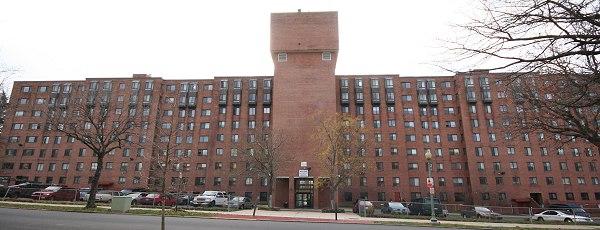
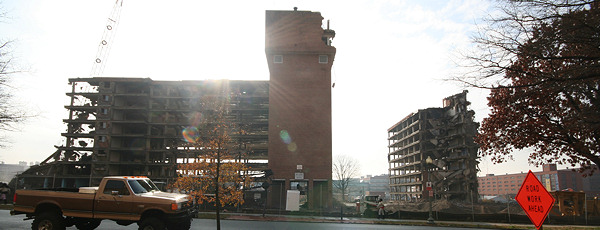
Foggy air with low-in-the-sky not-very-bright December sun is not conducive to snappy photos, so this is just a brief update to capture the most pressing changes to the skyline. Demolition started back up this week at Old Capper Seniors: the southeast wing is now gone, and the east wing is getting smacked with the wrecking ball this morning. You can see the demolition from all angles in the old Capper Senior Expanded Archive. I also took a few shots of 55 M's progress (look for the  icon in its Expanded Archive).
icon in its Expanded Archive).
 icon in its Expanded Archive).
icon in its Expanded Archive).
1391 Posts:
Go to Page: 1 | ... 33 | 34 | 35 | 36 | 37 | 38 | 39 | 40 | 41 ... 140
Search JDLand Blog Posts by Date or Category
Go to Page: 1 | ... 33 | 34 | 35 | 36 | 37 | 38 | 39 | 40 | 41 ... 140
Search JDLand Blog Posts by Date or Category



